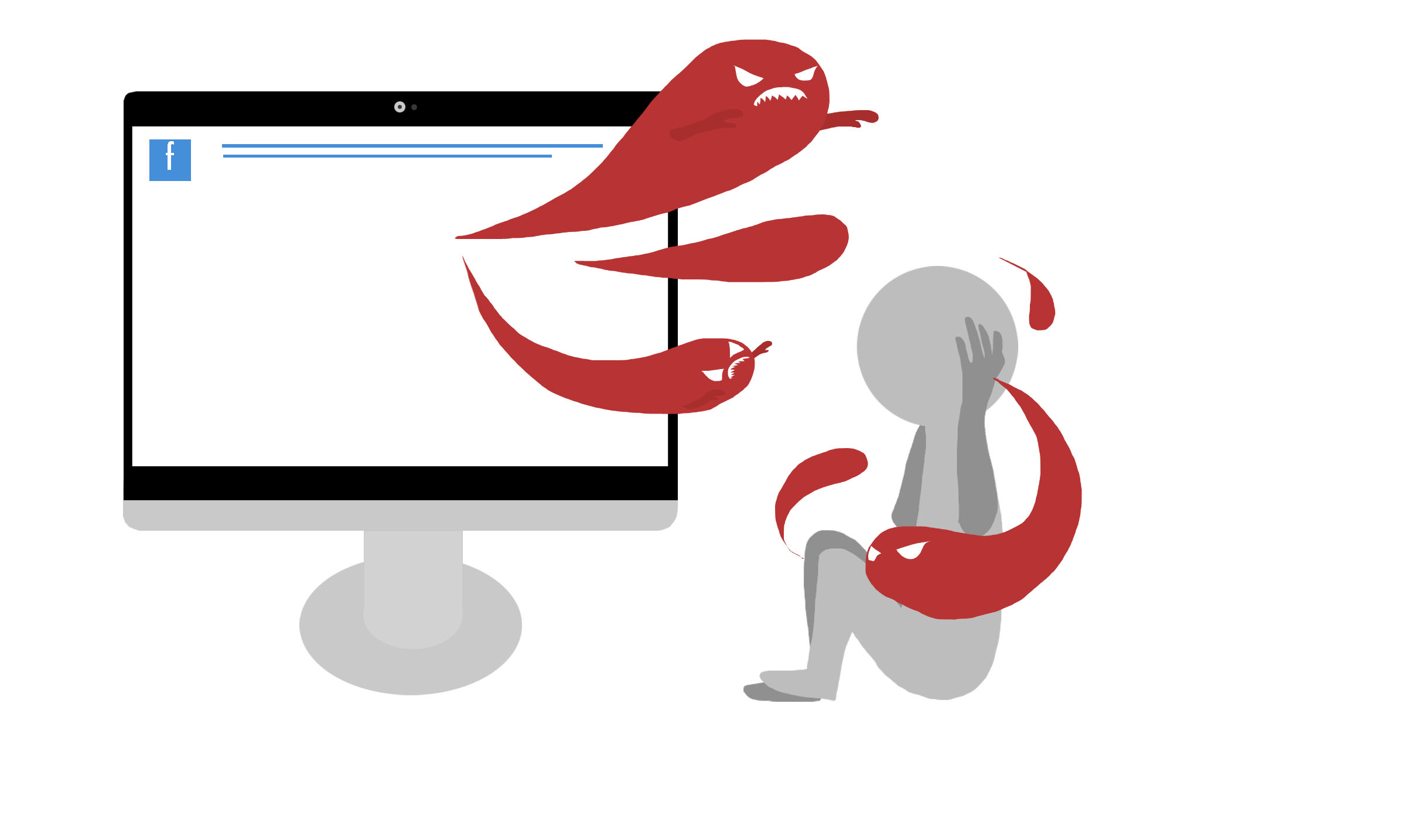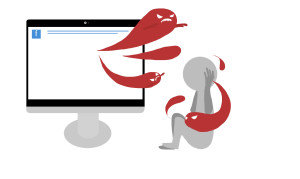Abuse of techonology promotes cyberbullying

Categories :
Focus
 According to the Pew Research Center’s 2014 Internet Project Omnibus Survey, 89 percent of Internet users between the ages of 18 to 29 use some form of social networks. A report by the Huffington Post shows that over 135 million new Twitter accounts are created every day. Facebook reports that 48 percent of 18 to 34 year olds check Facebook when they wake up in the morning.
According to the Pew Research Center’s 2014 Internet Project Omnibus Survey, 89 percent of Internet users between the ages of 18 to 29 use some form of social networks. A report by the Huffington Post shows that over 135 million new Twitter accounts are created every day. Facebook reports that 48 percent of 18 to 34 year olds check Facebook when they wake up in the morning.With the massive influence that social media garners, it becomes easier for people to abuse. Statistics from the i-Safe Foundation have found that over one half of adolescents and teens have experienced some form of cyber bullying, and many more do not tell their parents or other authoritative figures when these instances of online bullying occur.
“People tend to feel less responsible for their actions online,” Junior Shannon Chen, a CyberPatriots team captain, said. “But the anonymity provided by the Internet doesn’t hold true in all cases.”
Earlier this school year, students used an anonymous, location-based app called “Yik Yak” to spread slander about other students and faculty. Principal Charles Park of Palos Verdes High and Principal Mitzi Cress of Palos Verdes Peninsula High both released statements reprimanding students for the flippant use of anonymous posts and reminding them that consequences, both on the offenders and the victims, are permanent. AP Psychology teacher John Wheeler says that the app was brought up during a faculty meeting in September.
“We were told to be wary of it, were informed as to what it is and how it was being used in negative ways,” said Wheeler.
Yik Yak spotlights a large issue—accountability. The promise of anonymity allows users to abuse speech in ways they would not normally.
“People will feel protected by crowds and not feel responsible for their actions in a crowd-type situation; they may do things that they would normally never think of doing if they were by themselves and knew they were going to be held accountable for what they are doing,” said Wheeler.
Internet use can endanger users further. Many cellphones can be tracked through GPS or the “pinpoint location” feature on Facebook, which predators have used to stalk their victims. According to the National Violence against Women survey administered by the Centers for Disease Control and Prevention, people, especially women, between 18 and 29 years of age are the primary targets of stalking, comprising 52 percent of all stalking victims. These instances of stalking are often linked to other forms of abuse in intimate relationships. Teenagers who suffer domestic abuse should seek immediate help from on-campus resources.
Librarian Silvia Gutierrez says that the Palos Verdes Peninsula Unified School District is registering students on school computers to monitor use of school technology. On-campus cyber bullying and the use of school-prohibited websites will be considered abuse. This way, if a student reports abusive action on technology during school hours, the District can trace the comment or visit to the student responsible.
“There’s more to cyber bullying than just having access to a computer, so while I think [registering for computers] can make this campus safer, we don’t know what happens off-campus,” Gutierrez said.

